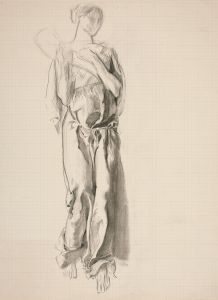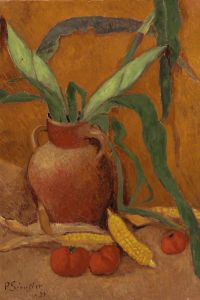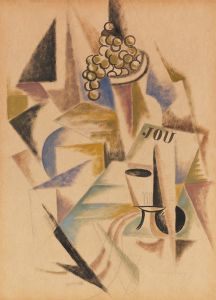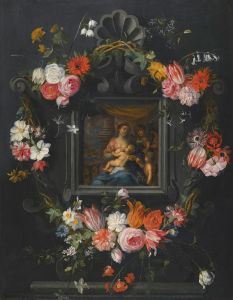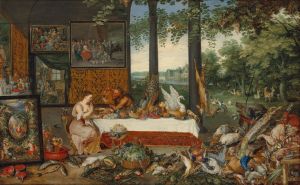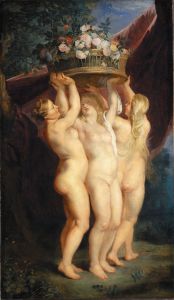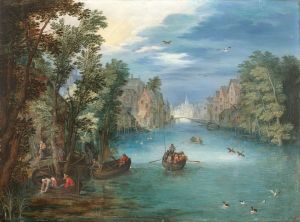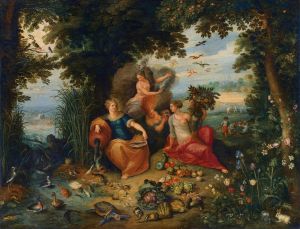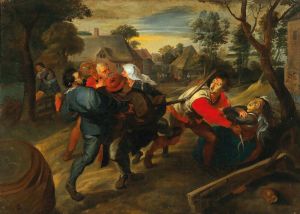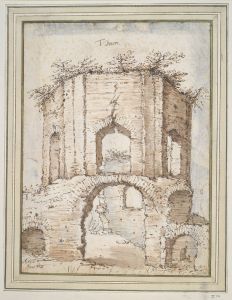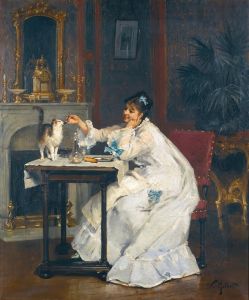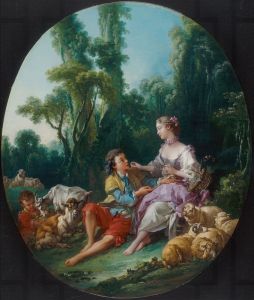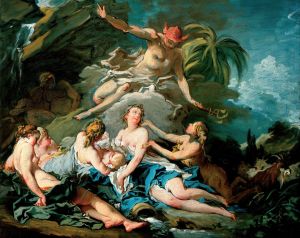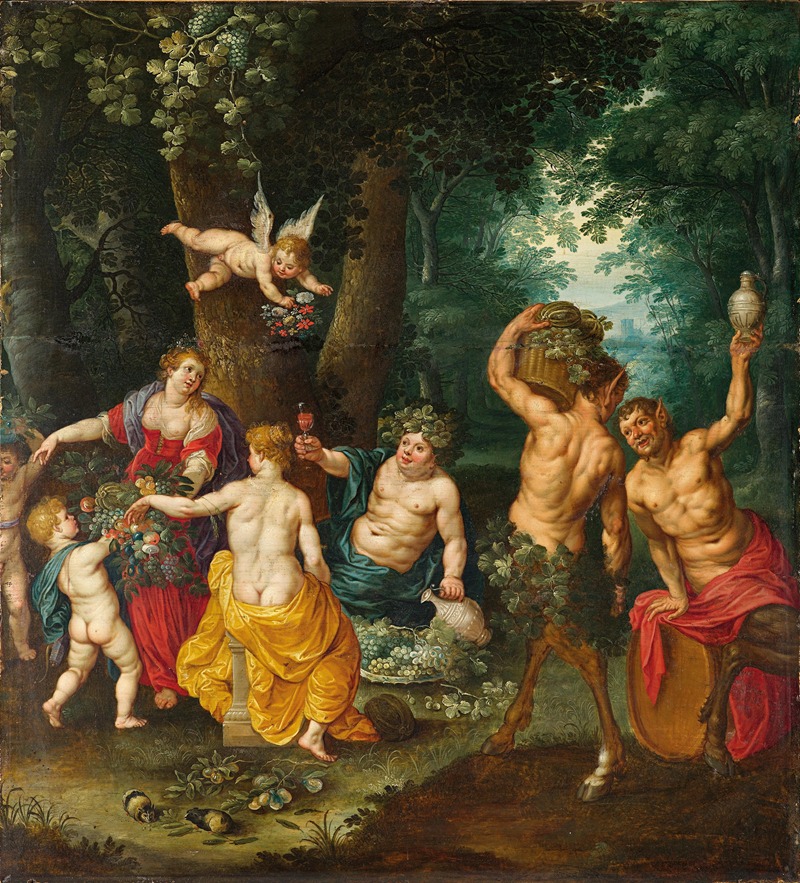
The Feast Of Bacchus
A hand-painted replica of Jan Brueghel the Younger’s masterpiece The Feast Of Bacchus, meticulously crafted by professional artists to capture the true essence of the original. Each piece is created with museum-quality canvas and rare mineral pigments, carefully painted by experienced artists with delicate brushstrokes and rich, layered colors to perfectly recreate the texture of the original artwork. Unlike machine-printed reproductions, this hand-painted version brings the painting to life, infused with the artist’s emotions and skill in every stroke. Whether for personal collection or home decoration, it instantly elevates the artistic atmosphere of any space.
Jan Brueghel the Younger was a prominent Flemish Baroque painter, known for his detailed landscapes, allegorical scenes, and vibrant use of color. He was born in 1601 in Antwerp, into a family of artists. His father, Jan Brueghel the Elder, was a renowned painter, and his grandfather, Pieter Bruegel the Elder, was one of the most significant artists of the Northern Renaissance. Jan Brueghel the Younger continued the family tradition, often collaborating with other artists and producing works that were highly sought after in his time.
"The Feast of Bacchus" is one of the notable works attributed to Jan Brueghel the Younger. This painting depicts a scene from classical mythology, focusing on Bacchus, the Roman god of wine, revelry, and ecstasy. Bacchus, known as Dionysus in Greek mythology, was a popular subject in art due to the rich symbolism associated with wine and its effects on human behavior, as well as the themes of celebration and indulgence.
In "The Feast of Bacchus," Brueghel captures a lively and festive atmosphere, characteristic of Bacchic celebrations. The painting is filled with figures engaged in various activities associated with a feast or festival. The composition is typically crowded, with a multitude of characters, including satyrs, nymphs, and human revelers, all partaking in the merriment. The figures are often depicted in dynamic poses, dancing, playing musical instruments, or enjoying the abundance of food and drink.
Brueghel's attention to detail is evident in the intricate rendering of the figures and the lush landscape that often serves as the backdrop for his mythological scenes. The use of vibrant colors and careful composition creates a sense of movement and energy, drawing the viewer into the celebration. The painting not only showcases Brueghel's technical skill but also reflects the Baroque fascination with drama, emotion, and the interplay of light and shadow.
Jan Brueghel the Younger was known for his collaborative works, often partnering with other artists to combine his talent for landscapes and still life with their expertise in figure painting. While it is not uncommon for Brueghel's works to involve contributions from other artists, "The Feast of Bacchus" is primarily attributed to him, showcasing his ability to handle both the figures and the setting with equal proficiency.
The painting reflects the cultural and artistic milieu of the 17th century, a time when classical themes were revisited and reinterpreted by artists across Europe. The depiction of Bacchus and his followers would have resonated with contemporary audiences, who were familiar with the classical myths and the allegorical meanings behind them.
Jan Brueghel the Younger's works, including "The Feast of Bacchus," are celebrated for their intricate detail, vibrant color palette, and the ability to capture the essence of the mythological and allegorical subjects he portrayed. His paintings remain significant examples of Flemish Baroque art, continuing to be studied and appreciated for their artistic and historical value.





